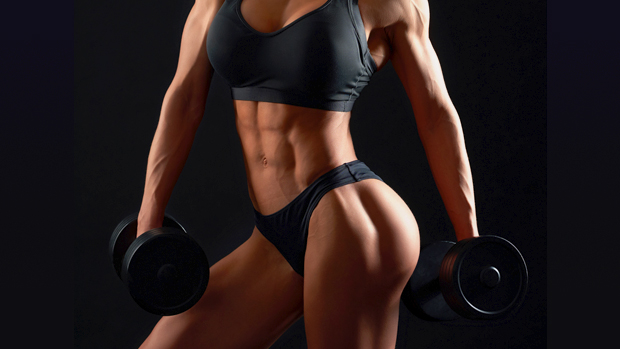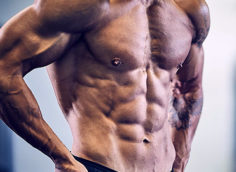Full-Body Workouts Suppress Appetite
According to a new study, full-body workouts suppress hunger more than upper/lower splits, even when training volume is equal. That could help dieters stay in control.
On the flip side, full-body training may not be the best choice for the skinny folks who don't have much of an appetite to begin with. They would be better off with upper/lower, push/pull, or some variety of bro split.
The Nitty Gritty Details
From a muscle-building perspective, most studies show there isn't much difference between various training splits, assuming weekly volume per body part is equal (1).
For example, training chest in two weekly workouts of 6 sets per session won't produce much difference in muscle protein balance compared to doing three weekly sessions of 4 sets per workout. By the end of the week, you're still doing 12 working sets of chest and triggering the same amount of protein synthesis.
But what about other factors, like how different training splits affect appetite? A group of Brazilian nerds recently conducted a study on this very topic (2).
The Study
Researchers took 12 recreationally active men with about four years of training experience and put them all through three different workouts, all separated by a washout week.
- For the full-body workout, they performed six exercises for 3 sets each, the last set taken to failure.
- For the lower-body only workout, they performed three exercises for 6 sets each, the last set taken to failure.
- For the upper-body only workout, they again performed three exercises for 6 sets each, the last set taken to failure.
Notice that the training volume was equal between groups. All three conditions had participants doing 18 total sets.
What They Found
A subjective hunger scale measured hunger at multiple points. Ratings were the same after an overnight fast, after breakfast, and before exercising to limit confounding variables. In other words, everyone had the same appetite prior to doing the workouts.
That said, post-workout measures found an interesting trend. An hour after training, the upper and lower-body workout group reported DOUBLE the hunger ratings compared to the full-body group, which reported the strongest appetite-suppression effect.
Two hours post-workout, the difference was less pronounced, but the full-body group still showed some hunger-suppressing effects.
Why Did That Happen?
Blood lactate levels, measured in all participants, were strongly correlated with the decreases in hunger. The more lactate was produced, the less hunger was perceived.
This makes sense. Training more total muscle mass creates more lactate which has been previously shown to suppress appetite in aerobic training (3).
How to Use This Info
If you're not dieting, don't struggle with appetite, or couldn't care less about maximizing satiety, just do whatever training split you enjoy most. It's not that big of a deal.
However, if you want some additional appetite-suppressing benefits, a full-body training split is worth considering.
Another unique way to look at this study is for hardgainers. Skinny guys and gals usually struggle to eat enough, so choosing a body part split or upper/lower split where less total muscle mass is trained each day could "free up" some appetite and make caloric targets more practical.
References
- Schoenfeld, Brad Jon, et al. "How Many Times per Week Should a Muscle Be Trained to Maximize Muscle Hypertrophy? A Systematic Review and Meta-Analysis of Studies Examining the Effects of Resistance Training Frequency." Journal of Sports Sciences, U.S. National Library of Medicine, June 2019, www.ncbi.nlm.nih.gov/pubmed/30558493.
- Freitas, Marcelo Conrado de, et al. "Appetite Is Suppressed After Full-Body Resistance Exercise Compared With Split-Body Resistance Exercise: The Potential Influence of Lactate and Autonomic Modulation." Journal of Strength and Conditioning Research, U.S. National Library of Medicine, 27 May 2019, www.ncbi.nlm.nih.gov/pubmed/31145383.
- Islam, Hashim, et al. "Potential Involvement of Lactate and Interleukin-6 in the Appetite-Regulatory Hormonal Response to an Acute Exercise Bout." Journal of Applied Physiology (Bethesda, Md. : 1985), American Physiological Society, 1 Sept. 2017, www.ncbi.nlm.nih.gov/pubmed/28684587.




